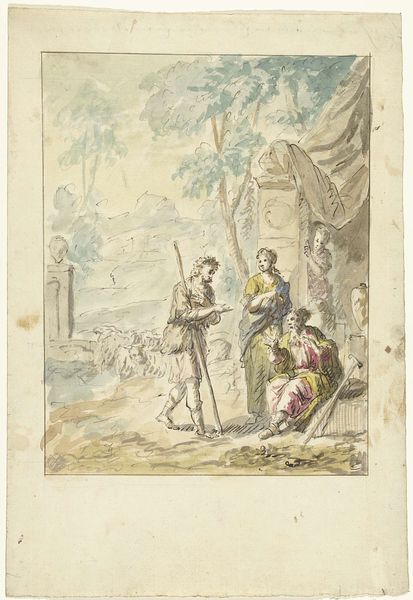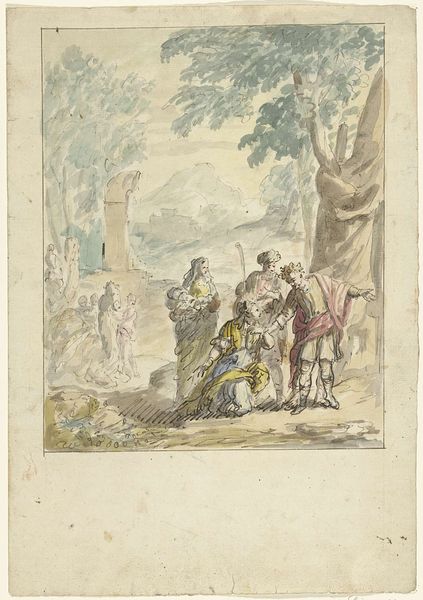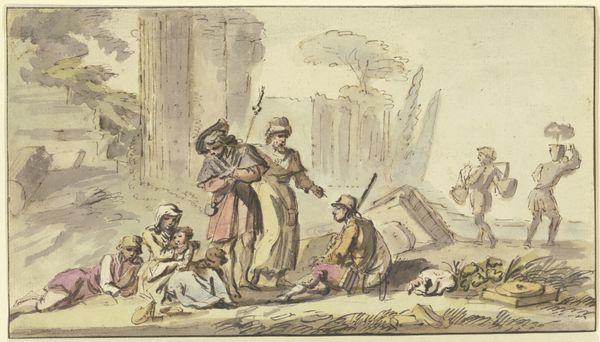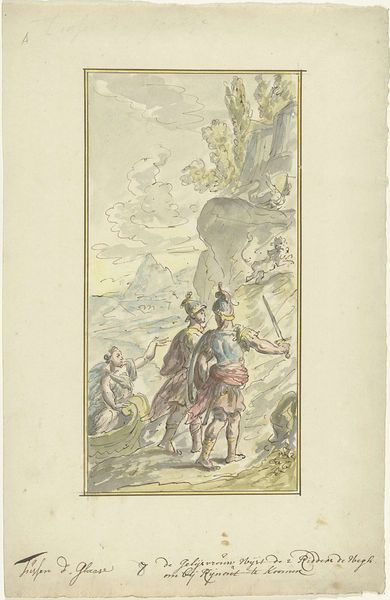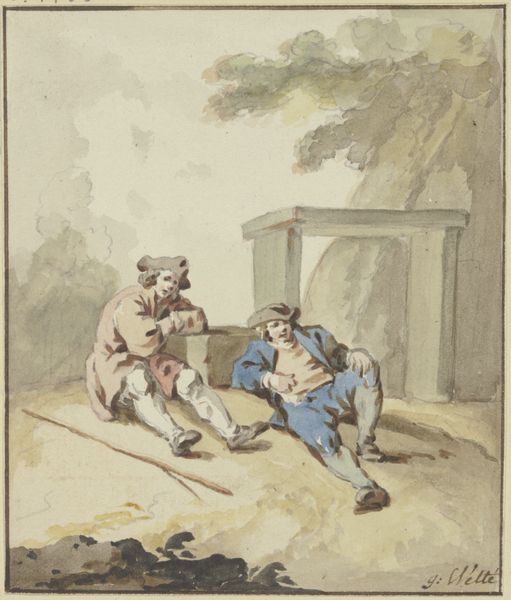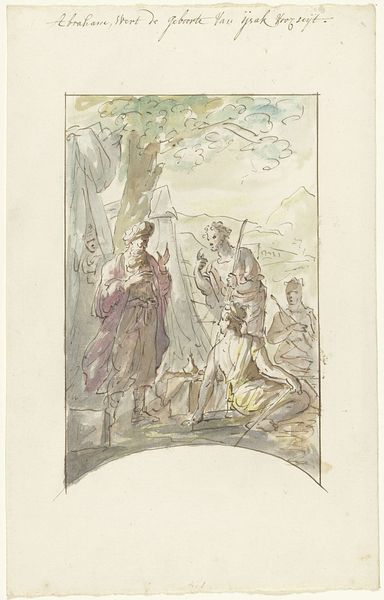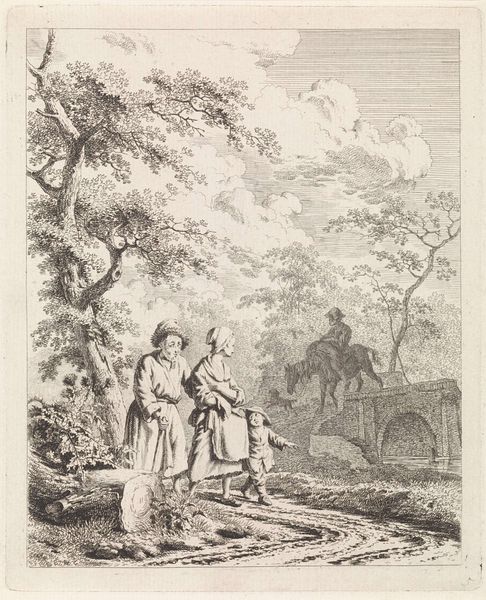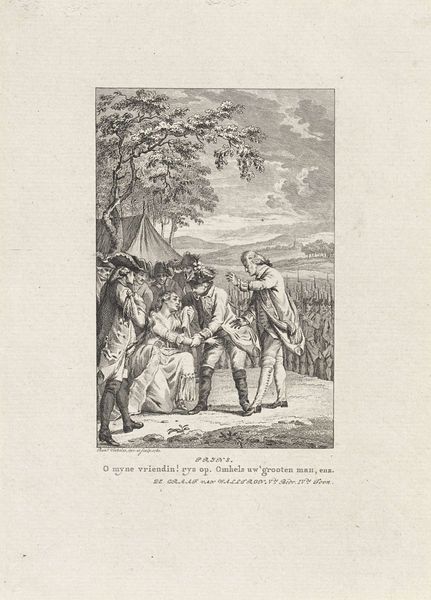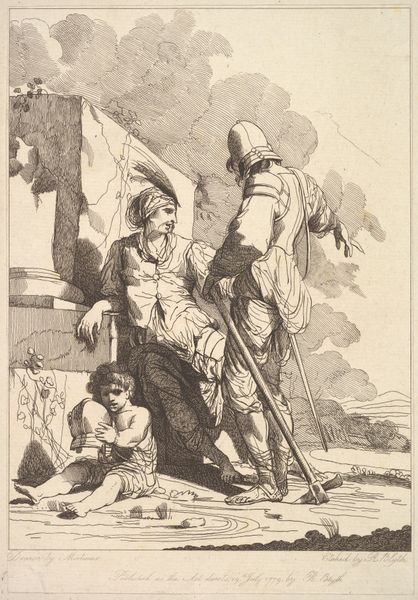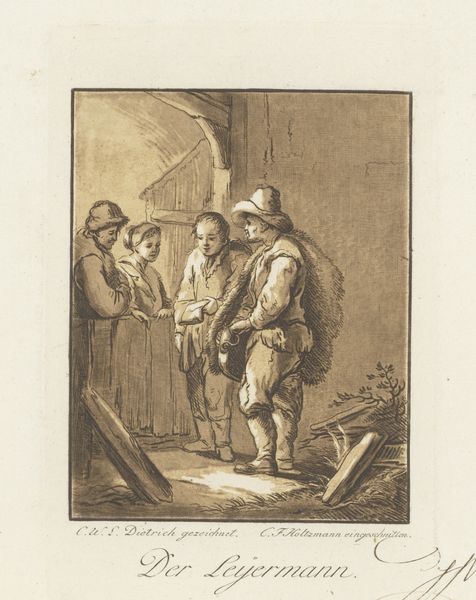
drawing, watercolor
#
drawing
#
baroque
#
pencil sketch
#
figuration
#
watercolor
#
watercolour illustration
#
genre-painting
Dimensions: height 354 mm, width 244 mm
Copyright: Rijks Museum: Open Domain
Curator: This scene feels suspended, almost like a dream. The figures are loosely sketched, the colors muted… it evokes a sense of gentle mystery. Editor: We are looking at "Abraham ontvangt de drie engelen" – "Abraham Receiving the Three Angels" – a drawing by Elias van Nijmegen. It was created sometime between 1677 and 1755, using watercolor and pencil. Curator: Van Nijmegen really captures the otherworldly nature of this biblical scene. Look at the posture of the figures; Abraham's gesture, and the angel’s stance--there’s a palpable tension. The Baroque embraced dramatic movement, yet this feels subdued, interior. It almost feels melancholic. Editor: Yes, it’s interesting how Van Nijmegen reconciles the dynamic energy of the Baroque with a more contemplative mood. Genre paintings during this time, particularly in the Dutch Republic, were gaining popularity. What sort of political impact did that decision have on the selection and visual display of such images? Curator: The angels, these divine messengers, are rendered with such human qualities. In certain symbolic traditions, three figures appearing together represent spiritual completion. Think of the psychological impact such accessible depictions had. People might really reflect on their lives with such common scenes. Editor: I see your point. Making the divine more accessible undoubtedly shifted religious dynamics within the social context of the time. It provided a template. How might social reform shape an artist's rendering of common motifs? Curator: Absolutely. This watercolor's lasting strength lies in its gentle ambiguity. Is it the joy of divine encounter, or a more subdued recognition of one's place in the universe? We continue to discuss this art in this present tense is remarkable. Editor: Indeed. Considering its blend of stylistic influences and subject matter, "Abraham ontvangt de drie engelen" truly highlights the dynamic conversation between art, religion, and society. Curator: Van Nijmegen's piece leaves us considering that meeting place, offering a view that goes beyond religious dogma.
Comments
No comments
Be the first to comment and join the conversation on the ultimate creative platform.
